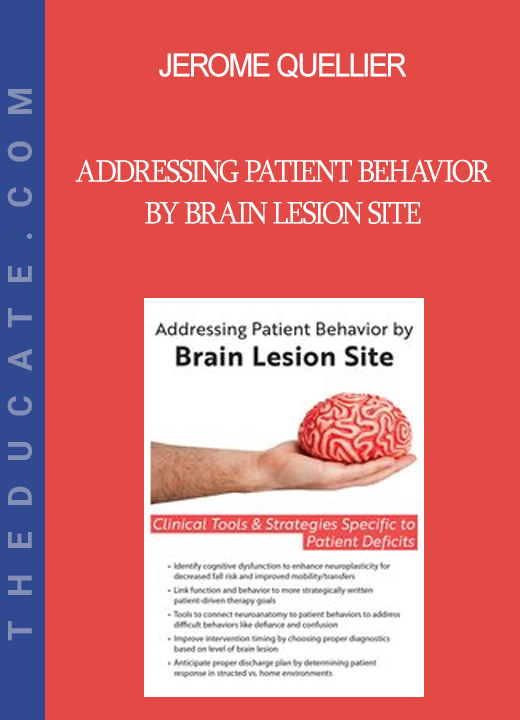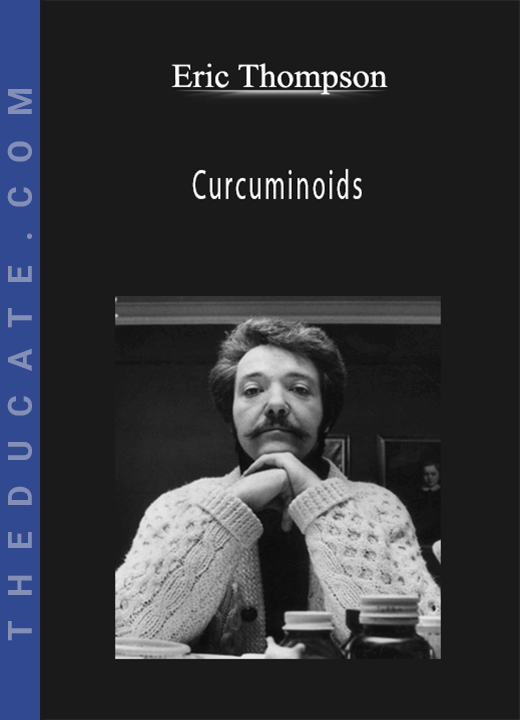Description

-
Jerome Quellier – Addressing Patient Behavior by Brain Lesion Site: Clinical Tools & Strategies Specific to Patient Deficits
- Faculty:
- Jerome Quellier
- Duration:
- 5 Hours 52 Minutes
- Format:
- Audio and Video
- Copyright:
- Jun 07, 2019
Description
Neuroanatomy is admittedly complex and overwhelming. Clinicians working in rehabilitation are faced with growing caseloads, diminished resources/reimbursement, and increasingly medically complex patients with the expectation of improving outcomes and reducing length of stay. Honing knowledge of clinically-relevant neuroanatomy and neuropathology can predict dysfunction and intuitively create a scaffold for assessment and treatment even before meeting the patient.
Predetermining potential deficits leads to a more tightly defined diagnostic battery and expedites treatment formulation. By deducing the patient’s experience, the clinician can also prepare for behavioral barriers to engagement and understand the healing process with greater compassion.
In this recording, participants will learn intermediate-level neurophysiology as it relates to cognitive-linguistic skills and behavioral control, as well as explore mindfulness techniques for stress reduction. The overlying foci of the course are to arm treating professionals with an improved clinical eye, predicting dysfunction, and expedite the pathway to treatment. Course content will also include patient-focused educational materials for stroke and traumatic brain injury ready to utilize by treating practitioners.
Handouts
| Manual – Addressing Patient Behavior by Brain Lesion Site (20.7 MB) | 181 Pages | Available after Purchase |
Outline
Neuroanatomy And The Impact On Cognitive Processing
- Basic neuronal anatomy
- Brain wiring: Association, projection, and commissural fiber tracts
- Brain lobes locations and ties to cognitive processes
- Cerebellum and impact upon cognition
- Case Study 1: Jacob’s anxiety and how pacing the halls become therapeutic
Optic System And Visual Perception
- Optic constructs, anterior-posterior fiber tracts
- Visual cortices and unique roles in visual processing
- Effect of tumors, shear injuries, CVA lesions upon visual processing
- Case study 2: Why can’t my patient just see the whole worksheet like I do?
- Group Exercise: Review of vision diagnostics by discipline (PT/OT/SLP)
How Neurotransmitters Drive The Bus
- Internal communication systems within the brain
- Dopamine pathways and effects on cognition and reward systems
- Serotonin pathways and mood modulations
Executive Functions Of The Frontal Lobe
- The Cognitive Pyramid and moving patients upward
- Skull anatomy and effects of shear injury
- Shear injury as it affects anxiety and behavioral health
- Therapy implications for PT/OT/SLP
- Group Exercise: Review of executive function diagnostics by discipline (PT/OT/SLP)
Communication And The Left Hemispheric Functions
- Broca’s vs. Wernike’s area
- Function of the accurate fasciculus upon communication
Spatial Processing And The Right Hemispheric Functions
- Neurophysiology vs neuropathology, understanding patients’ nonverbal challenges
- Inferential language and social cognition
- A sense of time and spatial organization revealed
The Hidden Processors-Thalamic Influences
- Auditory pathways and neuroanatomy
- Thalamic engagement on sensory information
- Modulation of sleep and vigilance
Memory: How The Hippocampus And The Amygdala Partner
- Memory processes
- Memory types: Right vs left hippocampal functions
- Hypoxia and anoxia upon memory function
- Sleep and memory consolidation, effect of exercise on memory structures
- Amygdala’s influence upon fear-based learning and hijacking executive control
- Case study 3: Nile’s hypoxia and long term rehab outcomes
Recovery From Acceleration/Deceleration Injuries: Diffuse Axonal Injury (DAI)
- Microanatomical features of DAI
- CTE: Chronic Traumatic Encephalopathy
- Where medications have failed
Agitation Management Strategies
- Review how working knowledge of the Rancho Los Amigos levels and practitioner tips can avoid confrontation
- Learn trick of the trade for avoiding escalation
- Confabulation and denial – addressing the elephant in the room
Enriching Patient And Clinician Relationships
- The science behind mediations and mindfulness
- Reigning in the runaway situation
Faculty

Jerome Quellier, MS, CCC-SLP Related seminars and products: 6
Jerome Quellier, MS, CCC-SLP, is a clinical specialist in traumatic brain injury and communication disorders at a 450+ bed Level 1 Trauma hospital in Saint Paul, MN with almost 25 years of acute, residential, and outpatient rehabilitation experience. During his tenure at the hospital he has focused on neuro-based diagnostics and intervention for dysphagia, cognitive-linguistic deficits, head and neck cancer management, patient advocacy, and curriculum development. Mr. Quellier has made a career-long study of the intricacies of neurology, completed advanced training in brain dissection at Marquette University, actively engages in staff development training, and recently joined a surgery team in preserving language function during tumor resections.
In addition to his clinical practice, he has previously held a faculty position at the University of Minnesota Duluth teaching graduate level coursework, and taught undergraduate workshops as adjunct faculty at the University of Wisconsin Eau Claire. Mr. Quellier is excited to bring this topic to the forefront after working with the interdisciplinary team’s challenges in understanding the “what and why” of traumatic brain injury, stroke, neurodegenerative diseases and tumor resections as they apply to behavioral changes. He graduated Cum Laude with his bachelor’s degree and graduate degree from the University of Wisconsin Eau Claire.
Speaker Disclosures:
Financial: Jerome Quellier has an employment relationship with Regions Hospital. He receives a speaking honorarium from PESI, Inc.
Non-financial: Jerome Quellier is a member of the American Speech-Language-Hearing Association.






Reviews
There are no reviews yet.